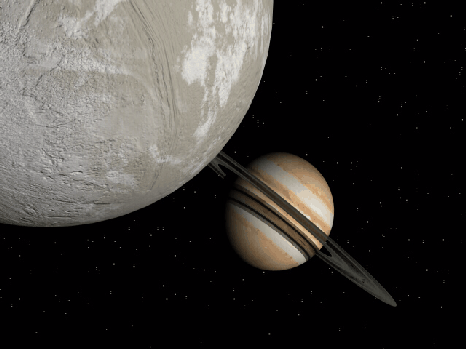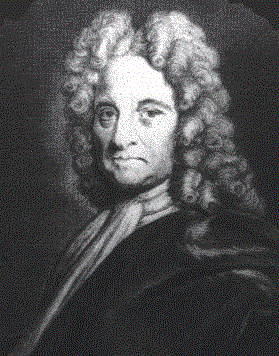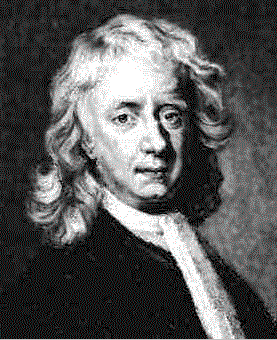NASA APOD #378-384
#378 APOD News: July 01, 1996
“Within the last few years, observational astronomy has given humanity evidence of the existence of worlds beyond the solar system. Indeed, solar-type stars are now inferred to harbor planets of approximately Jupiter mass - some residing in temperature zones which could conceivably support liquid water and therefore life! Above is a hypothetical scene near one such planet whose sun, 47 Ursae Majoris (47 UMa), is a yellow dwarf star (spectral class G0 V) very similar to our own. In our sky, it appears as a faint, inconspicuous star below the cup of the northern hemisphere asterism, "the Big Dipper". (Our own sun would be equally inconspicuous when viewed from 47 UMa ...) Astronomer's G. Marcy and P. Butler announced the discovery of a planet associated with this star in 1996 and reported it to have a mass of about 2.4 Jupiters or more with an orbital period of 3 years. This artist's vision pictures the detected planet, referred to as 47 UMa b, as a gas giant surrounded by a ring of material - analogous to our own gas giant Saturn. In the foreground lies a hypothetical moon of 47 UMa b. Could such a moon support life? 47 UMa is only 44 light years distant, fairly close by astronomical standards - yet there is evidence for planetary systems which are closer still. NASA plans to explore nearby planetary systems using spaceborne observatories. APOD News: RJN to MTU"
Copyright: Extrasolar Visions
#379 APOD News: July 02, 1996
“What will NASA rockets look like in the future? Today's announcement gave one indication. Today Vice- President Al Gore announced that the Lockheed Martin Corporation will work with NASA to produce a reusable rocket with a remote pilot. Currently designated the X-33 program, the flight demonstration rocket design will utilize only a single stage, cost relatively little per launch, and be ready for re-launch within days. It is expected that an X-33 type rocket will be in use by NASA by the the year 2000. Pictured above is an artistic depiction of the candidate vehicle. APOD News: RJN to MTU"
Copyright: Public domain
#380 Tomorrow's picture: July 03, 1996
“Why is there a hole in the center of this nebula? A leading explanation is that it is caused by the stellar winds from the stars that live there. Stars - including the Sun - expel electrons, protons, and other charged ions in a steady stream - the stellar wind. The wind ions push out the normal hydrogen and helium gas found glowing in the nebula. This star forming region is located in the Large Magellanic Cloud. This picture is a composite of three separate photographs, each sensitive to only one specific color of light - a color that distinguishes a specific chemical element. It is currently not known why stars emit a stellar wind."
Copyright: U. MichiganCurtis
Schmidt TelescopeCTIOChile
#381 APOD News: July 04, 1996
“Three thousand light years away, a dying star throws off shells of glowing gas. This image from the Hubble Space Telescope reveals "The Cat's Eye Nebula" to be one of the most complex planetary nebulae known. In fact, the features seen in this image are so complex that astronomers suspect the bright central object may actually be a binary star system. The term planetary nebula, used to describe this general class of objects, is misleading. Although these objects may appear round and planet-like in small telescopes, high resolution images reveal them to be stars surrounded by cocoons of gas blown off in the late stages of stellar evolution. APOD News: Policy on Re-Running Pictures"
Copyright: Public domain
#382 Tomorrow's picture: July 05, 1996
“What's causing those odd rings in supernova 1987a? In 1987, the brightest supernova in recent history occurred in the Large Magellanic Clouds. At the center of the picture is an object central to the remains of the violent stellar explosion. When the Hubble Space Telescope was pointed at the supernova remnant in 1994, however, curious rings were discovered. The origins of these rings still remains a mystery. Speculation into the cause of the rings includes beamed jets emanating from a dense star left over from the supernova, and a superposition of two stellar winds ionized by the supernova explosion."
Copyright: Public domain
#383 Tomorrow's picture: July 06, 1996
“Sir Edmond Halley was quite a discoverer. Born in 1656, he computed in 1705 that a bright comet was periodic and would make another appearance in 1758. The comet appeared as predicted and is now known as Comet Halley. Unfortunately, Halley died in 1742 and never saw his prediction come true. In 1716 Halley proposed two types of diving bells that would enable people to explore the deep sea. Halley pioneered our understanding of trade winds, tides, cartography, naval navigation, mortality tables, and stellar proper motions. Halley (incorrectly) proposed that the Earth was made of concentric spheres the size of the inner planets each of which might contain life. Perhaps Halley's greatest discovery, however, was that his contemporary Isaac Newton had discovered a powerful mathematical formulation of gravity."
Copyright: Public domain
#384 Tomorrow's picture: July 07, 1996
“Sir Isaac Newton changed the world. Born in 1643, Newton was only an above-average student. But he went home from Cambridge one summer in 1665, thought a lot about the physical nature of the world, and came back two years later with a revolutionary understanding of mathematics, gravitation, and optics. A Professor of his, upon understanding what Newton had done, resigned his own position at Cambridge so Newton could have it. Newton's calculus provided a new mathematical framework for the rapid solution of whole classes of physical problems. Newton's law of gravitation explained in one simple formula how apples fall and planets move. Newton's insights proved to be so overwhelmingly powerful he was the first scientist ever knighted."
Copyright: Public domain
Upvote! Resteem! Comment! As you like it! Thank you for attention!







This post was resteemed by @steemitrobot!
Good Luck!
The @steemitrobot users are a small but growing community.
Check out the other resteemed posts in steemitrobot's feed.
Some of them are truly great. Please upvote this comment for helping me grow.